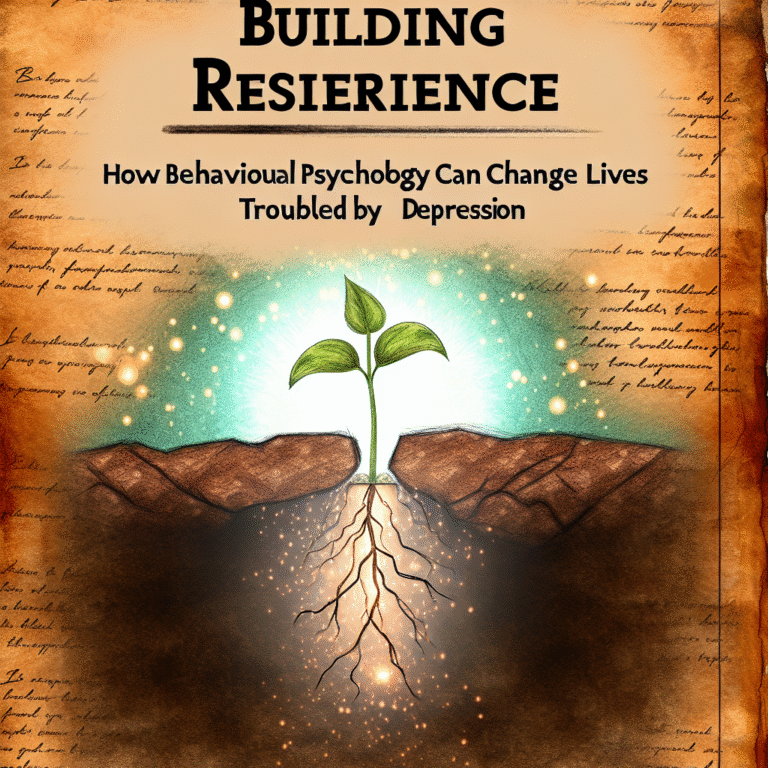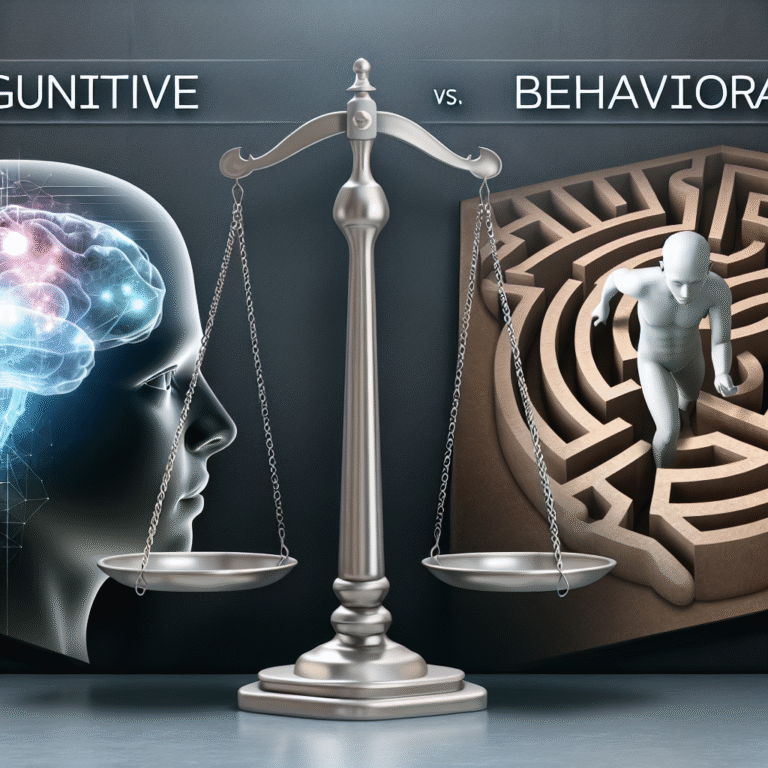
Beyond the Diagnosis: Behavioral Psychology’s Role in Fostering Independence in Autism
Introduction
From the moment a child is diagnosed with autism, parents, caregivers, and educators often become immersed in the myriad symptoms and challenges associated with the condition. But what if we could shift the conversation from merely diagnosing and managing autism to focusing on the potential for independence and self-sufficiency? This is where the field of behavioral psychology enters the equation, offering tools and strategies aimed at enhancing the quality of life for individuals on the autism spectrum.
Beyond the Diagnosis: Behavioral Psychology’s Role in Fostering Independence in Autism explores how behavioral psychology not only aids in understanding behaviors associated with autism but also provides critical frameworks that empower individuals to thrive. With insights gleaned from real-world applications, we will uncover how behavior modification techniques can lead to greater autonomy and independence for those on the spectrum.
Understanding Behavioral Psychology
What is Behavioral Psychology?
Behavioral psychology, also known as behaviorism, focuses on the observable behaviors of individuals rather than internal thoughts or feelings. In this context, the approach is particularly relevant for individuals with autism, as many may struggle to articulate their thoughts or feelings effectively. The aim is to identify behaviors—both adaptive and maladaptive—and employ specific strategies to encourage more positive behaviors while minimizing those that may hinder independence.
The Importance for Individuals with Autism
For those on the autism spectrum, behavioral psychology offers a structured way to teach new skills, enhance communication, and support social interactions. By breaking down complex tasks into manageable steps, behavioral techniques can facilitate learning and growth, making them indispensable in fostering independence.
Behavioral Techniques in Action
Case Study: Positive Reinforcement in Daily Living Skills
Background: Jacob is a 12-year-old with autism who struggles with daily living tasks such as brushing his teeth and getting dressed. His parents sought help from a behavioral psychologist who employed a positive reinforcement strategy.
Implementation: Jacob was rewarded with a favorite sticker each time he completed a task independently. Over time, his parents gradually faded the rewards as Jacob became more competent in completing these tasks on his own.
Analysis: This case demonstrates how Beyond the Diagnosis: Behavioral Psychology’s Role in Fostering Independence in Autism applies practical reinforcement strategies that not only teach a skill but encourage ongoing independence. Positive reinforcement proved pivotal in building Jacob’s confidence and self-reliance.
Chart: Skills Acquisition Through Reinforcement
| Skill | Initial Attempts | Success with Reinforcement | Success Rate After 3 Months |
|---|---|---|---|
| Brushing Teeth | 2/10 | 8/10 | 9/10 |
| Getting Dressed | 3/10 | 7/10 | 10/10 |
Strategies for Fostering Independence
1. Task Analysis
Task analysis involves breaking down complex tasks into smaller, more manageable steps. For individuals with autism, this makes learning feasible and less overwhelming.
Example: Cooking a meal can be broken down into selecting a recipe, gathering ingredients, following each step of the recipe, cooking, and serving the dish. Each step can be practiced separately before attempting the entire task together.
2. Social Skills Training
Many individuals on the autism spectrum find social interactions challenging. Behavioral psychology employs role-playing scenarios and social stories to help individuals understand social norms and responses.
Case Study: Mia, a young autistic girl, practiced initiating conversations through role-play with her behavioral therapist. Over six months, she improved her ability to start conversations with peers, leading to increased social acceptance and friendships.
3. Visual Supports and Schedules
Using visual schedules and supports can help individuals understand daily routines and what is expected of them. This not only assists with independence but can also reduce anxiety related to uncertainty.
Example Chart: Daily Routine for Jason
| Time | Task | Visual Support |
|---|---|---|
| 7:00 AM | Wake Up | Picture of alarm clock |
| 7:30 AM | Breakfast | Picture of breakfast |
| 8:00 AM | School Prep | Picture of backpack |
| 4:00 PM | Homework | Picture of books |
The Role of Parents and Caregivers
Involvement and Support
Parents and caregivers play a critical role in the success of behavioral interventions. Their involvement can range from reinforcing techniques at home to collaborating with professionals. Knowing when to step back and allow the individual to practice independence is crucial.
Motivational Tip: Encourage autonomy by celebrating small victories.
Building Self-Confidence
Instilling confidence through gradual exposure to new tasks fosters resilience. Behavioral psychology emphasizes the significance of mastery—small successes lead to greater challenges.
Case Study: Larry’s Journey to Cooking Independence
Background: Larry, a 15-year-old with autism, expressed an interest in cooking but was anxious about the complexity of various recipes.
Implementation: His caregiver utilized task analysis and began with simple meals he could prepare independently, such as sandwiches.
Outcome: After a year, Larry was preparing full meals for the family, enjoying the independence and creativity that cooking afforded him.
Challenges and Considerations
Resistance to Change
One of the challenges faced in behavioral interventions is resistance to change. Individuals may prefer routines and familiar tasks, making it essential to introduce new skills gradually and empathetically.
Balancing Independence with Safety
While fostering independence is vital, must ensure that safety is always prioritized. Educators and caregivers should assess risks and introduce skills within a safe framework.
Emotional Regulation
Behavioral psychology recognizes the importance of teaching emotional regulation to enhance independence. Techniques like mindfulness and self-calming exercises can improve emotional intelligence, leading to better decision-making.
Conclusion
The journey of fostering independence for individuals with autism extends beyond the diagnosis; it involves understanding the unique behaviors and needs of each person and utilizing behavioral psychology’s rich toolkit. By implementing strategies like task analysis, positive reinforcement, and social skills training, we can empower individuals on the spectrum to lead fulfilling, independent lives.
Incorporating behavioral techniques fosters not only skills but also self-esteem, resilience, and confidence. Now is the time for a paradigm shift in how we approach autism support—from mere coping mechanisms to a focus on independence and self-determination.
Motivational Takeaway
As we delve beyond the diagnosis, let’s embrace the possibilities that behavioral psychology opens up for individuals with autism. Together, we can support them in achieving their dreams and autonomy, lighting a path toward self-sufficiency and a fulfilling future.
FAQs
1. What is the primary goal of behavioral psychology in autism?
The primary goal is to identify and modify behaviors that can promote independence and improve quality of life while addressing challenges often associated with autism.
2. How long does it typically take to see results from behavioral techniques?
Results vary by individual and technique, but many families notice improvements within weeks to months as behaviors are reinforced and learned.
3. Can behavioral psychology techniques be used with other developmental disorders?
Yes, behavioral psychology is effective with various developmental disorders, including ADHD and intellectual disabilities, as it focuses on observable behaviors and skill development.
4. Is it necessary to work with a professional?
While some techniques can be implemented at home, working with a certified behavioral psychologist can provide tailored strategies and supports for optimal outcomes.
5. How can I reinforce independence in my child with autism?
Start by celebrating small achievements, using visual schedules, incorporating task analysis for new skills, and being patient through the learning process. Encourage your child to take on responsibilities that align with their interests and strengths.
In summation, beyond the diagnosis, the application of behavioral psychology can make a profound difference. It’s an essential pillar in nurturing independence, focusing not just on what’s challenging but on what’s possible.
















